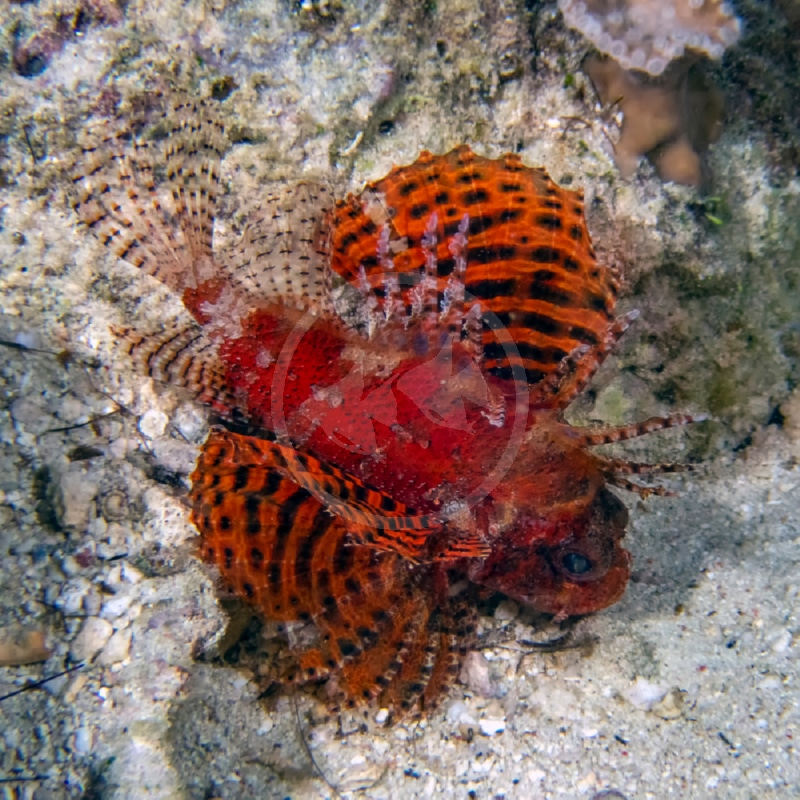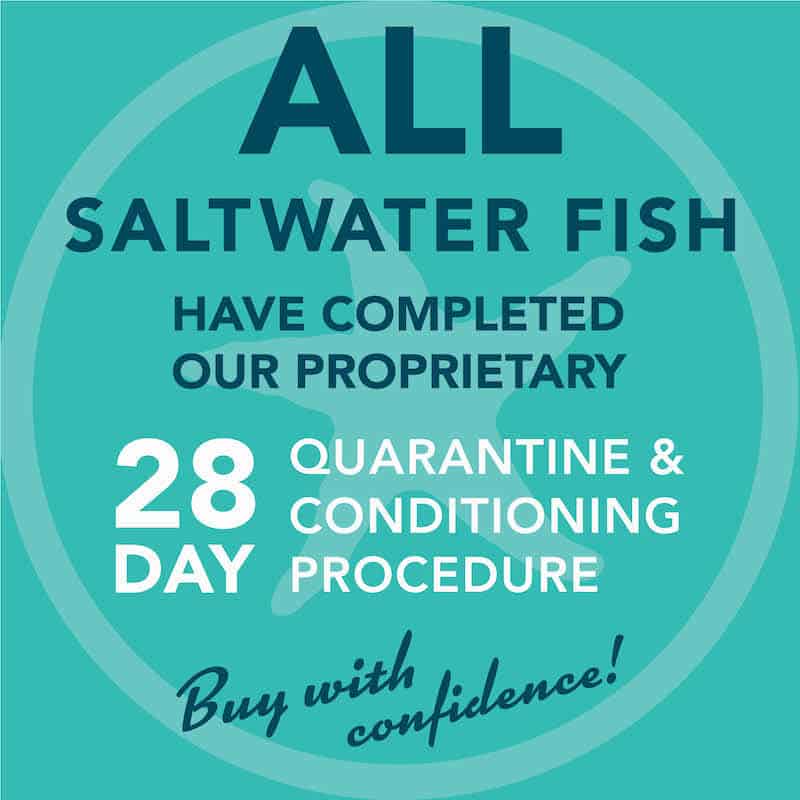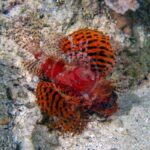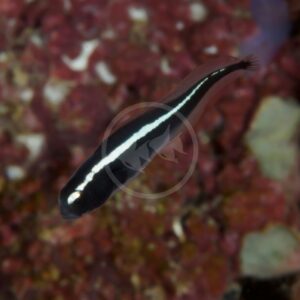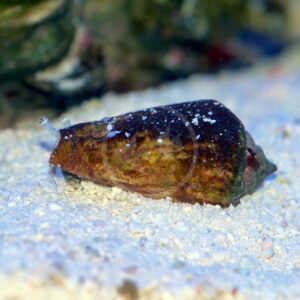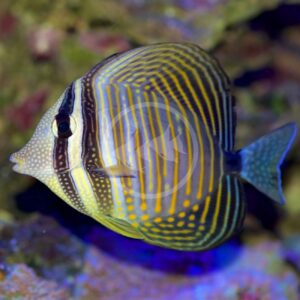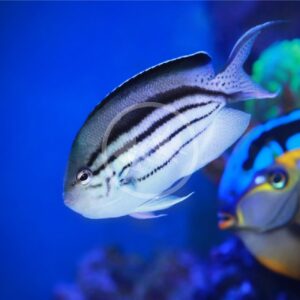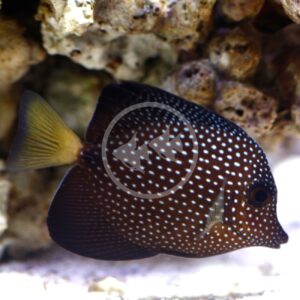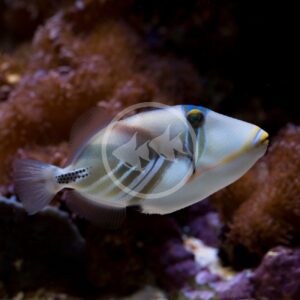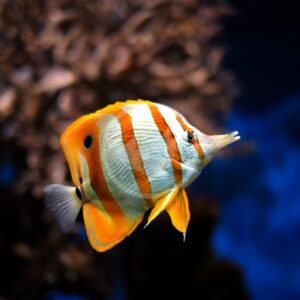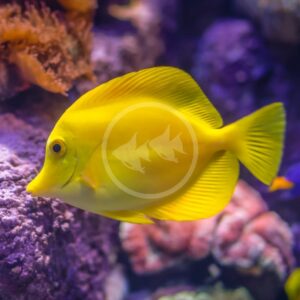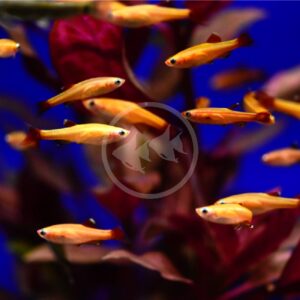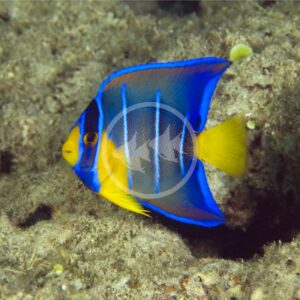*We cannot ship Lionfish species to the state of Florida.
Care Level: Moderate
Temperament: Semi-Aggressive
Reef Compatible: No
General Description: The Dwarf Fuzzy Lionfish, also known as the Shortfin Lionfish or simply Dwarf Lionfish, is native to the Indo-Pacific. It gets its name from the quirky “fuzzy” appearance of its facial appendages, pectoral fins and dorsal spines. This lionfish typically comes in red to brown color forms, but in rare circumstances, some individuals can sport yellow patches of coloration. The Dwarf fuzzy lionfish may be confused with the Dwarf Zebra Lionfish (Dendrochirus zebra), which can also be referred to as just a Dwarf Lionfish. Some distinguishing characters are that the pectoral fins of a Dwarf fuzzy lionfish have dark bands across them, where this is absent in the Dwarf zebra lionfish. Additionally, while Dwarf fuzzy lionfish can have some large stripes on their bodies, these are usually fewer and less pronounced compared to the Dwarf zebra lionfish. A nocturnal species, it is not uncommon for your Dwarf fuzzy lionfish to spend time hiding under an overhang during the daytime until it acclimates to the environment. An adult Dwarf fuzzy lionfish can reach a size of approximately 5 to 7″, making them a more manageable alternative to larger lionfish species. Lionfish are sensitive to copper based medications. Caution: Dwarf fuzzy lionfish have a series of venomous spines on their dorsal, pelvic and anal fins that are used in defense. If stung, the sensation is similar to a bee sting but more potent. Remove any part of the spine from the affected area (if applicable) and put the wound underneath the hottest water you can tolerate (not scalding) for 15 – 20 minutes; this breaks down the venom proteins. Then seek the appropriate medical attention. For those that are sensitive to stings, seek medical attention immediately.
Diet Requirements: Dwarf fuzzy lionfish are carnivores. In most cases, lionfish need to be offered live food as a precursor to frozen foods. We recommend giving live ghost shrimp a high quality flake food before feeding them to a lionfish so that they have greater nutritional value. Use a pair of tongs to hold the prey in front of the lionfish so that it begins to associate the tongs with feeding. Some lionfish may turn away or be startled at first, but consistency is key. Once your Dwarf fuzzy lionfish is interested in frozen foods, appropriate options will vary depending on the size of the individual. Examples include brine shrimp, squid, mysis shrimp, krill, and chopped fish to maintain optimal health and coloration. Because lionfish don’t actively swim throughout the day in the water column, they can be target fed every other day. Note: While we strive to offer Dwarf fuzzy lionfish that are eating strictly frozen foods, or a combination of frozen foods and live foods, it is not uncommon for them to revert back to only accepting live foods for a period of time due to the stress of a new environment.
Care Requirements: A minimum 30 gallon aquarium is ideal for smaller specimens; a larger individual may be more comfortable in 55 gallons or greater. Lionfish appreciate some live rock in the aquarium, especially a cave or two to hang in during the day and at night. Dwarf fuzzy lionfish can be kept solitary or in small groups, so long as there is not harassment within the group. For the best chance at success of keeping a group, adding all individuals at once into the aquarium is ideal. Mixing other genera of lionfish should be approached with caution because of their larger adult sizes. Compatability with other dwarf lionfish species (Dendrochirus; Zebra or Fu Manchu) is variable. Dwarf fuzzy lionfish will consume invertebrates and fish small enough to fit in their mouths, making them unsuitable for reef aquariums or small aquariums that may contain such fish species. Unlike the versatility of Volitan lionfish, the Dwarf fuzzy lionfish should not be kept with overly aggressive tank mates. A more laid back aquarium is ideal, so long that tank-mates are chosen accordingly (i.e., cannot be eaten). Recommended water conditions, 72-78° F, KH 8-12, pH 8.1-8.4, salinity 1.020-1.025.
Purchase Size: Small: 2″ or less; Medium: 2-1/4″ to 3-1/4″
Note: Your item may not look identical to the image provided due to variation within species. Purchase sizes are approximate.


